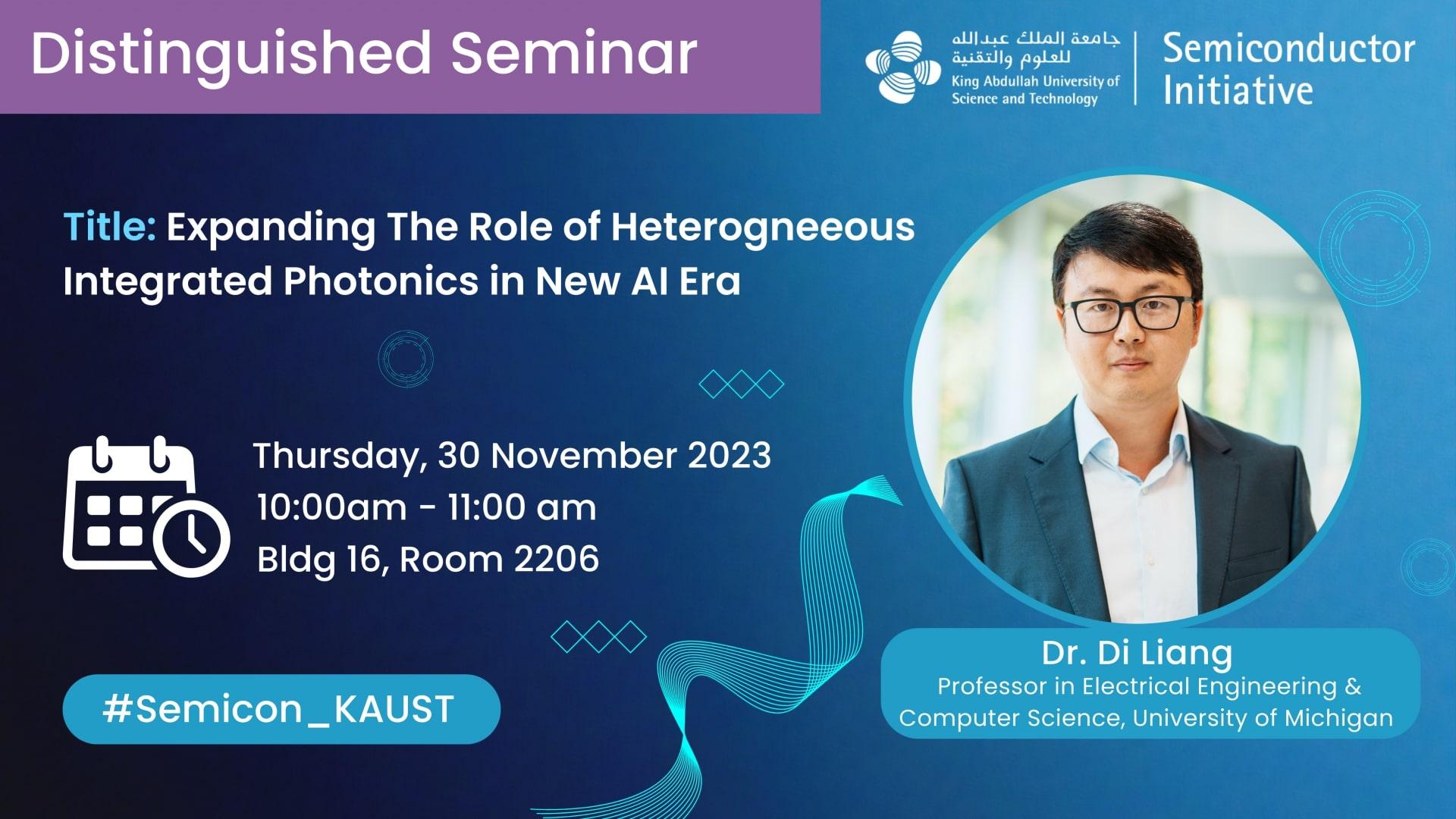Abstract
Integrated photonics, particularly Silicon-based photonics, is a disruptive technology reshaping the landscape of optical communication in the past 10 years. A marriage of silicon and other functioning photonic materials, e.g., compound semiconductors, through heterogeneous integration results more than just combining complementary merits of different material systems. As the world is embracing a new AI era, heterogeneous integrated photonics with broader versatility has potential to trigger huge impact in communications and computing in AI clusters. I will attempt to elaborate this with examples of heterogeneous integration-enabled key photonic devices, densely integrated photonic circuits, new functionalities, and emerging applications.
Brief Biography
Di Liang is currently a Professor in Electrical Engineering and Computer Science Department at the University of Michigan, Ann Arbor. Prior that, he was a Director / Senior Staff Engineer in the Alibaba Group – US for two years and was a Distinguished Technologist at Hewlett Packard Labs in Hewlett Packard Enterprise where he led the advanced R&D of silicon and compound semiconductor integrated photonics for energy-efficient optical interconnect, high-performance computing and other emerging applications. He received his bachelor's degree in Optical Engineering from the Zhejiang University, China, and Master and PhD degrees in Electrical Engineering from the University of Notre Dame, US. He has authored and coauthored 1 edited book, 7 book chapters, over 270 journal and conference papers, and was granted by more than 50 patents with another 55+ pending. He is a Fellow of Optica (former OSA), and associate editor of Optica: Photonics Research and IEEE: Journal of Quantum Electronics.
